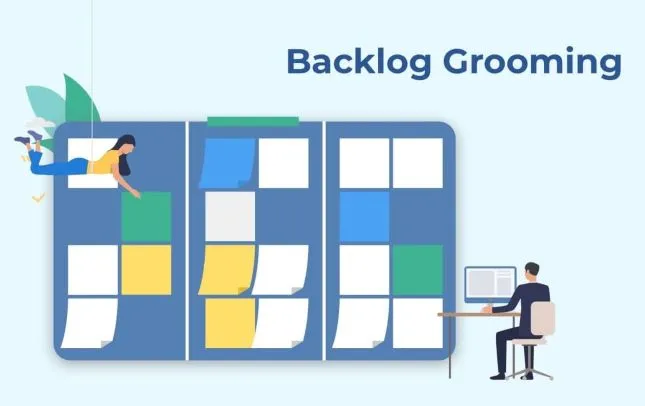We've already written about Agile, Scrum, Sprint, Sprint Retrospective, and Sprint Planning, so it's time to write about Sprint (Scrum) Grooming.
Backlog Grooming and Backlog Refinement are common practices in agile digital product development.
Backlog Grooming Sessions in agile methodologies have a vital function. They are mainly responsible for the productivity of work, its fluidity, and its effectiveness. At the same time, they significantly impact the atmosphere that prevails in the team.
The essence of agile project management is to strive for continuous learning and to improve the team.
To continuously improve, the team must meet the requirements and respond flexibly to changes. And even more importantly, it must plan the project's course accordingly.
Breaking down large projects into Sprints makes managing the Backlog of work that will inevitably arise extremely important. They are an integral part of agile methodologies.
Backlog Grooming and Backlog Refinement are terms very often used when talking about project Backlog, its management, working with it, and prioritizing it.
What is Backlog Grooming? Is Backlog Refinement a synonymous term? Should they be associated with a different scope of work or activities?
What is Backlog Refinement? Why is it worth performing Backlog Grooming, and what benefits can the team obtain during Grooming meetings?
If you are curious about what Sprint Grooming should be associated with, why it should be used, and what best practices are recommended for Grooming and Backlog Refinement, be sure to read the following article.
We cordially invite you to read it!
What are Sprint Grooming and Backlog Grooming?
Sprint Grooming has lived to see several synonyms and sometimes design team meetings function under the names Backlog Refinement, Backlog Estimation, or Story Time.
Let's start by explaining the word Grooming, which may be misunderstood.
The term Grooming has several meanings, including being used to describe taking care of something or someone.
In the context of IT project management and UX/UI work management, this original sense is also important because such an approach to work, a tool like Backlog, is vital and beneficial.
All right, but what exactly do Sprint Grooming and Backlog Grooming mean?
Sprint Grooming and Backlog Grooming are regular meetings aimed at updating, improving, and refining – or, to put it more in line with the linguistic sense of these terms – taking care of the Backlog.
According to another definition, the Backlog Grooming process involves refining the User Story, optimizing elements of the Backlog, breaking large tasks into smaller tasks, and prioritizing them.
This work identifies the scope of activities we should implement in the next Sprint or Sprints.
Just a reminder that a Product Backlog is nothing more than an organized and structured list of tasks, activities, functions, and elements that need to be performed so that a digital product can be created in accordance with the expectations of users and stakeholders.
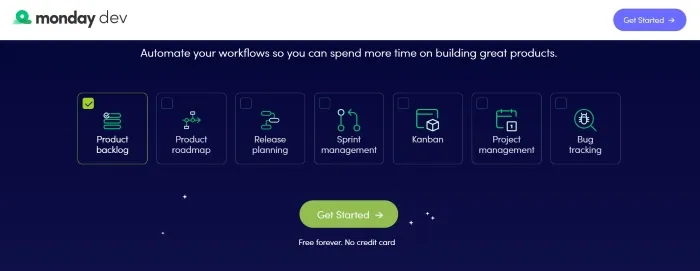
On the other hand, Sprint Backlog is a list of activities and tasks we plan to do in a given Sprint. Thus, it is a narrower concept that is included in the term Product Backlog.
To put it differently, a Product Backlog is a collection of User Stories waiting for implementation and given appropriate ranks and prioritization.
User Story allows us to define and concretize expectations and user requirements for a specific fragment of software (for example, a given functionality).
Although the Backlog may appear to be a fixed structure that is not subject to change, in reality, it is constantly changing.
It is determined, for example, by things such as budget, market situation, and changing expectations of users.
Why is it worth holding Sprint Grooming meetings?
Teams working in a sprint rhythm are as efficient, effective, agile, fast, optimal, and error-free as perfect are the Backlogs they use.
Sprint Grooming is used to refine the Backlog, and most often, a Backlog Grooming meeting takes a regular form and is a permanent part of running a project in the agile methodology.
As one of its key goals, Agile project management aims for continuous improvement that allows us to maintain high quality throughout the project cycle.
The essence of this approach is flexibility, development, and striving to meet requirements. Mainly concerning how to respond to change and regularly and consistently plan the work to be done by the team.
Meetings of this kind are aimed at updating and managing Backlog, which should be, in a sense, a representation of the knowledge and self-awareness of the development team and design team.
A Sprint Planning meeting (Sprint Planning session) and a Backlog Grooming meeting (Backlog Grooming session) are usually attended by Scrum teams and the Product Owner/Scrum Master.
However, this is neither the norm nor a prerequisite. The practice of Sprint Grooming in various organizations looks very different.
That being said, it would be nice to have the representatives of the entire cross-functional team to achieve the best possible results.
The composition of participants in a Grooming meeting is determined mainly by the nature of the project, the culture prevailing in the organization, and its goals for the project and its functioning.
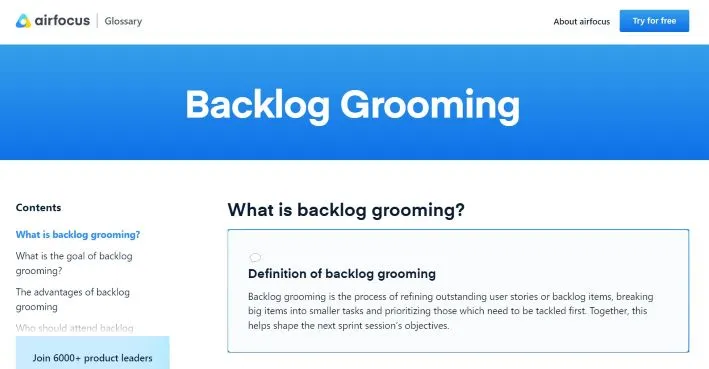
Although Grooming sessions are far from random, no strict rules determine their course or structure.
The objectives of a Grooming meeting are, first and foremost:
- Management – a thorough review of items in the Backlog.
- Making sure that the Backlog is up-to-date and complete.
- Assigning ranks to the Backlog and performing prioritization of items in the Backlog.
Backlog Refinement Sessions (meetings) are very beneficial for efficient and adequate Sprint Planning Meetings.
The above issues are best summarized by the remarks in the article "Grooming your backlog," published on the Atlassian blog.
The authors from Atlassian rightly point out that a vital part of agile methodologies is a regular, meticulous review of the content of the Backlog.
Meetings focused on such a goal should be held before the start of any new work, that is, before the start of a new Sprint. Before starting a new Sprint, performing a "maintenance" of the Product Backlog is necessary.
Adjustment of the Backlog is possible with the help of the following:
- Identifying, estimating, and "publicizing" the problems
- Evaluating problems
- Describing the problems and putting them into a broader context so all stakeholders can understand them.
The main advantages of Sprint Grooming
Sprint Grooming, or, as we said, updating, refining, and managing the registry and preparing its elements for upcoming Sprints, sets up a framework for operations. It allows us to plan our work much more efficiently and rationally.
Both in the short-term (for the upcoming Sprint) and much more broadly (for the entire course of the project).
In practice, Sprint Grooming consists primarily of the following:
- Initial planning
- Overview of Backlog elements
- Breaking down large project elements into the smallest possible components
- Estimating the completion time of individual tasks
- Making Backlog items visible
- Removing elements that are either obsolete or unnecessary
- Introducing to the Backlog a clear order, "logic"
- Broadening the perspective of all team members
- Sharing knowledge and information.
The result of Sprint Grooming should be, above all:
- Reducing uncertainty within the team
- Increasing the efficiency of product creation
- Identifying the dependencies occurring in the project and in the team
- Assessing risks
- Defining the requirements clearly
- Expanding the requirements.
Meetings aimed at Grooming the Backlog also allow us to think more strategically about the project.
The benefits of regular Backlog Grooming sessions include the following:
- Improved work organization
- Better, more optimal work planning
- Minimized risks arising from decisions made based on false assumptions
- Increased involvement of team members in the project
- Increased sense of responsibility
- Confronting assumptions with their execution
- Increased, improved motivation
- Savings of time and work
- Better communication within the team.
In summary: as long as Sprint Grooming meetings are held regularly, they allow us to control the progress of the project better, organize the Backlog and, most importantly, help prevent the Backlog from turning into a black hole.
How much time should we devote to Backlog Grooming?
That is a valid question, but answering it is not easy. The closest to the truth and least helpful answer is this: it depends.
There are no predetermined norms or timeframe during which we should hold Backlog Grooming.
Usually, a reasonable time frame is between 30 to 60 minutes. Longer sessions do not translate into higher efficiency. Hence restraint and common sense should guide us.
The time required for a smoothly executed Grooming is primarily conditioned by the level of preparation, commitment, cooperation, the importance of the problems themselves, and the culture of keeping the Backlog.
Expressed, for example, in regularity, frequency, and meticulousness of keeping the Backlog.
Grooming or Refinement?
It is a somewhat Shakespearean dilemma. To Groom or to Refine, that is the question!
Backlog Grooming versus Backlog Refinement – this discussion appears from time to time in some articles. What is it about?
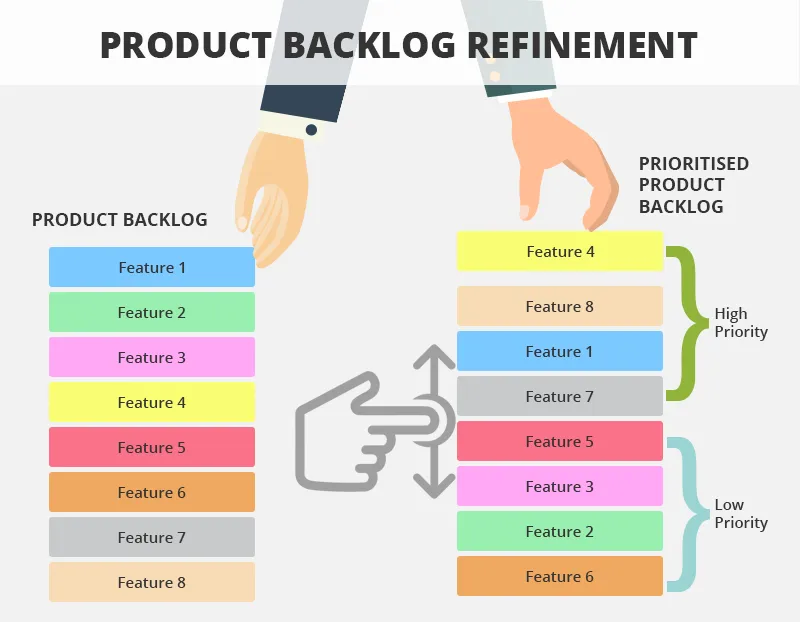
Are we dealing with synonyms, or rather two fundamentally different activities, events that have their own purposes?
Well, we can encounter such splitting of hairs and attempts to prove that we are dealing with entirely different activities, but in fact, there is a solid consensus on their synonymity.
Backlog Grooming and Backlog Refinement are used to name the same actions.
We can find a more detailed description of this problem in the article "Backlog Grooming vs. Backlog Refinement," whose author Miranda Dulin discusses this misleading distinction.
We will only add that, like most authors, we consider both names to be synonymous because it does not matter if it is grooming or refinement work. The result is the same. It is some kind of organization.
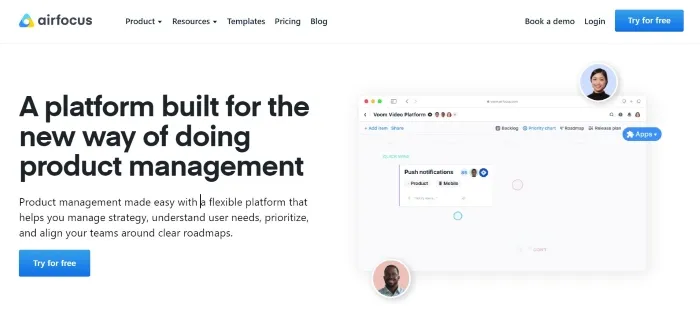
The reason for the introduction of the new term is related to man's best friends and practices prohibited by law. Management in itself has nothing to do with it.
The word Grooming has many meanings, including being used by owners of Pet grooming salons. It is also used in a legal context to describe illegal relationships with minors.
Grooming is thus a problematic word in a purely linguistic sense, not a substantive one.
Sprint Planning vs. Backlog Grooming vs. Daily Scrum
Similar dilemmas and ambiguities accompany the comparison of Backlog Grooming with concepts that are equally popular and, in some sense, share content, although they are not identical.
A Daily Scrum focuses on ongoing tasks that demand an immediate response and discusses what happens in a Sprint "in the heat of the moment." It is very short-term in nature.
Backlog Grooming is much more strategic and serves more general goals.
It also has a broader scope. It is used to integrate teams, to solve more general problems.
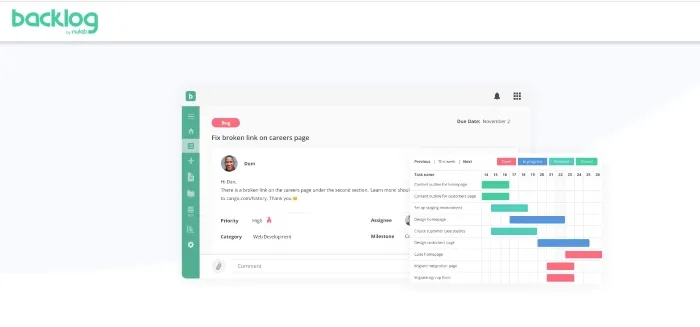
Although Sprint Planning and Sprint Grooming (Backlog Grooming) are two separate events that share some common features (e.g., they are used for unifying perspectives and understanding the work's complexity better), they are different.
Backlog Refinement ensures that the Backlog is up-to-date and relevant. It also helps to organize the Backlog and prepare it for the next Sprint.
Sprint planning can begin only after Sprint Grooming, not before it because there is simply no point to it in the latter option. A well-prepared Backlog is a prerequisite for good Sprint planning.
How to perform Sprint Grooming?
The primary condition for successfully Grooming the Backlog is adequate preparation. Scrum Masters and Product Owners, in particular, should be well prepared.
The effectiveness of Grooming sessions depends on the following:
- Learning about the perspectives of all stakeholders in order to obtain feedback
- The level of familiarity with the data (e.g., efficiency)
- Estimating the current, most urgent, and key problems
- Understanding their rank and priority
- Understanding the relationship between current problems and strategic goals, how connected and dependent they are, and what consequences they will bring.
Understanding the position, the context, the goals, and the strategies adopted allows us to plan the upcoming work and think in terms of several Sprints ahead.
It is undoubtedly worth polishing up the justifications for the priorities assigned to the tasks, items in the Backlog. They should be clear, logical, convincing, and almost obvious.
As a rule, the absence of such justifications for a given rank, priority means that they are not ready to take that position.
It is also advisable to use the DEEP method, developed by Roman Pichler, which we can find in his article "Make The Product Backlog Deep."
A good Product Backlog should be:
- Detailed Appropriately
- Estimated
- Emergent
- Prioritized
A Backlog adequately and sufficiently detailed is a Backlog in which the User Story is described well enough to be understood by team members representing different competencies, roles, and responsible.
A Backlog characterized by estimation should include estimates – as accurate as possible – in terms of the work and the time required to complete it.
The Emergent Backlog is characterized by changeability. As new user information is acquired, the Backlog changes, becoming more tailored to the needs.
A Prioritized Backlog is a tool structured to clarify that the items at the top of the list are more important, urgent, and significant to the project than those at the bottom.
In addition, as part of Sprint Grooming, we should also devote time to:
- Describe the values that characterize the item in the Backlog
- Describe the attributes of the items
- Describe criteria that allow us to categorize items in the Backlog
- Separate Backlogs based on their belonging to different categories (e.g., we should not combine programming and developer Backlogs with project or research Backlogs).
In other words, Sprint Grooming should serve to:
- Re-evaluate and prioritize User Story
- Initiate a discussion to understand the items in the Backlog better
- Simplify the User Story – create a simpler, smaller, and more manageable one.
Sprint Grooming. Summary
- Grooming in agile methodologies is responsible for productivity, fluidity, and effectiveness.
- Breaking down large projects into Sprints makes managing the work Backlog extremely important.
- Sprint Grooming and Backlog Grooming are regular meetings aimed at updating, improving, refining, and grooming the Backlog.
- Product Backlog is a collection of User Stories waiting for implementation with already assigned appropriate ranks and prioritization.
- User Story allows us to define and concretize expectations and user requirements for a specific fragment of software (for example, a given functionality).
- Backlog Refinement ensures that the Backlog is up-to-date and relevant. It also helps to organize the Backlog and prepare it for the next Sprint.
- A well-prepared Backlog is a prerequisite for good Sprint planning.
- Teams working in a sprint rhythm are as efficient, effective, agile, fast, optimal, and error-free as perfect are the Backlogs they use.
- The essence of agile methodology is the pursuit of fulfillment of requirements and flexibility.
- Grooming meetings should be held before the start of a new Sprint.
- As long as Sprint Grooming meetings are held regularly, they allow us to control the progress of the project better, organize the Backlog and, most importantly, help prevent the Backlog from turning into a black hole.
- Backlog Grooming and Backlog Refinement are used to name the same activities.


